RainMotorsports
Partition Master
Well Rob if any of the companies want to know if this site can help sell products you can just point them here. I needed a keyboard to use the laptop along side the desktop and the price and your review sold it. Now you know I cant resist taking shots of something you have already done. Even though I always shoot my stuff.
I am not a terribly artistic person and I see Rob as a creative as well as a professional minded person. In emulating these shots you start to really see how each shots details had a real purpose. At a quick glance you might not notice the selective focus on the media button shots. Often times with the limited light Rob can create you have to open the aperture up causing depth of field to be shallow. But on these shots it isn't a limitation. Its there to draw your focus to the detail he wishes to discuss.
I have had some enjoyable conversations with Rob Williams over achieving results with limited resources and how with a little understanding and education anyone with a few hundred bucks can probably get into the niche of product photography.
First shot I went to do was not Robs but rather the press kit image that happens to be the style of my keyboard.
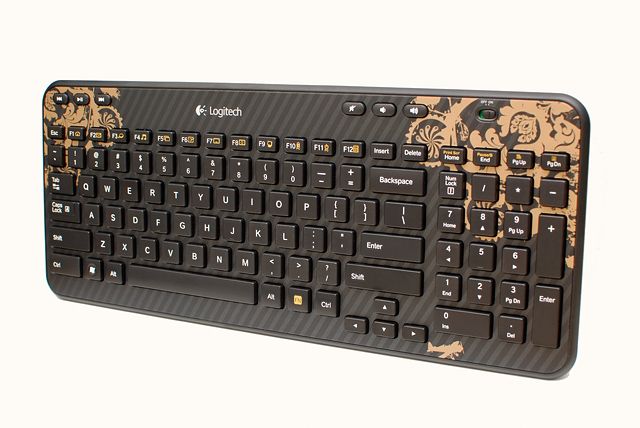
It turned out alright I messed the angle up and the editing leaves something to be desired. A little too warm in color balance and my one other full shot was the same way.

The required equipment to do this is a large sheet of paper preferably or cloth. I have a medium sized sheet which almost wont cut it. While professional photographers often have strobes and diffusers, if Joe McNally's "Hot Shoe Diaries" taught me anything it is that even a pro can get by without. A dSLR or a hot shoe equipped point and shoot and a cheap aftermarket flash can get you places. My Sigma flash is anything but cheap but compared to Nikon's offerings it is less expensive and more powerful than the SB800. The SB900 was not out when I bought into this.
Here is the article Rob posted - http://techgage.com/article/logitech_wireless_keyboard_k360_review/
One of the challenges faced with shooting this is the glare on the surface of the keyboard. We are using bounce flash to light our shots and get good diffused light. But going straight up can be a problem, going forward if a wall is too close can cause uneven lighting. We often end up shooting the flash backwards which is an issue because of your head.
My attempts at the shots within it:
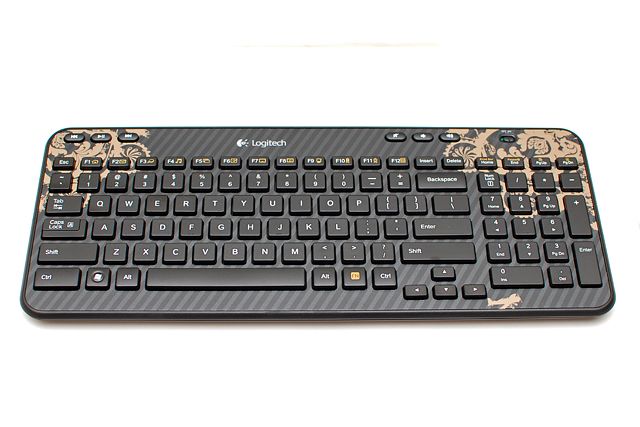

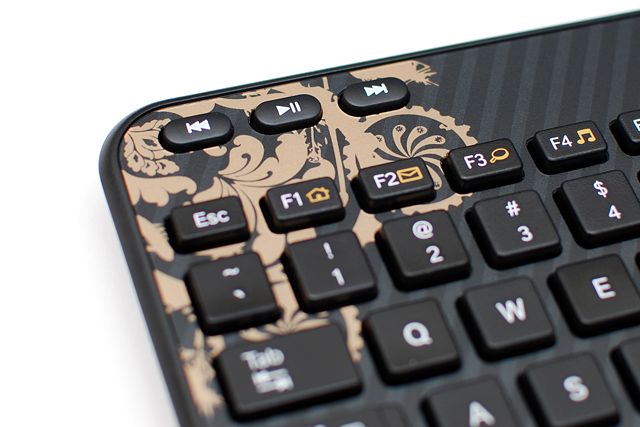
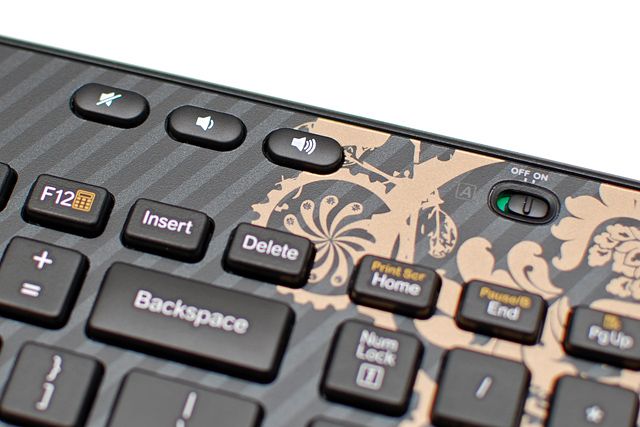
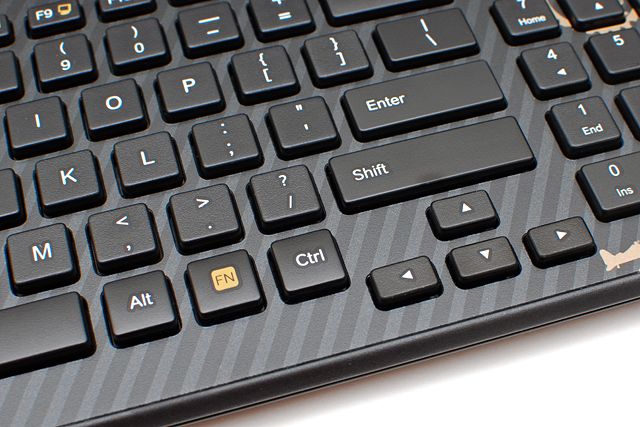
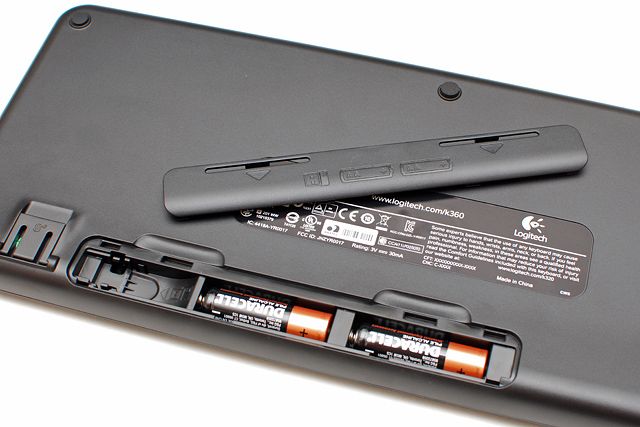
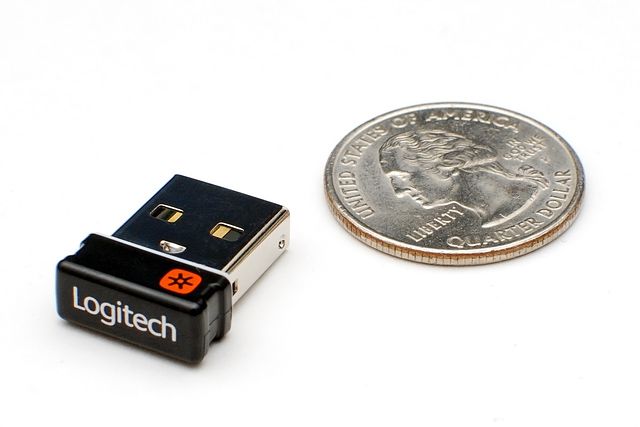
Rob I think you did an awesome job on all your shots. I would have to judge them as the standard in which to start my shots and this is something that would be difficult to reach. I messed up the last shot by not getting the light to reflect from the top of the USB adapter. Most of the angles are off, most of it doesn't matter per say but I am disappointed in myself anyways.
People may notice a little more texture in my shots but there isn't anything lacking in Rob's in that regard. Many people probably do not know one of the things Rob has to do. In order to make fast loading pages and keep site costs down the images need to be of small file size. The compression eats away at that detail.
I am not a terribly artistic person and I see Rob as a creative as well as a professional minded person. In emulating these shots you start to really see how each shots details had a real purpose. At a quick glance you might not notice the selective focus on the media button shots. Often times with the limited light Rob can create you have to open the aperture up causing depth of field to be shallow. But on these shots it isn't a limitation. Its there to draw your focus to the detail he wishes to discuss.
I have had some enjoyable conversations with Rob Williams over achieving results with limited resources and how with a little understanding and education anyone with a few hundred bucks can probably get into the niche of product photography.
First shot I went to do was not Robs but rather the press kit image that happens to be the style of my keyboard.

It turned out alright I messed the angle up and the editing leaves something to be desired. A little too warm in color balance and my one other full shot was the same way.

The required equipment to do this is a large sheet of paper preferably or cloth. I have a medium sized sheet which almost wont cut it. While professional photographers often have strobes and diffusers, if Joe McNally's "Hot Shoe Diaries" taught me anything it is that even a pro can get by without. A dSLR or a hot shoe equipped point and shoot and a cheap aftermarket flash can get you places. My Sigma flash is anything but cheap but compared to Nikon's offerings it is less expensive and more powerful than the SB800. The SB900 was not out when I bought into this.
Here is the article Rob posted - http://techgage.com/article/logitech_wireless_keyboard_k360_review/
One of the challenges faced with shooting this is the glare on the surface of the keyboard. We are using bounce flash to light our shots and get good diffused light. But going straight up can be a problem, going forward if a wall is too close can cause uneven lighting. We often end up shooting the flash backwards which is an issue because of your head.
My attempts at the shots within it:







Rob I think you did an awesome job on all your shots. I would have to judge them as the standard in which to start my shots and this is something that would be difficult to reach. I messed up the last shot by not getting the light to reflect from the top of the USB adapter. Most of the angles are off, most of it doesn't matter per say but I am disappointed in myself anyways.
People may notice a little more texture in my shots but there isn't anything lacking in Rob's in that regard. Many people probably do not know one of the things Rob has to do. In order to make fast loading pages and keep site costs down the images need to be of small file size. The compression eats away at that detail.
